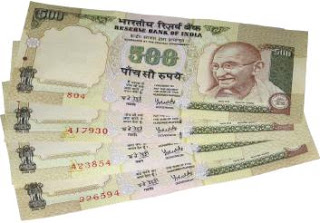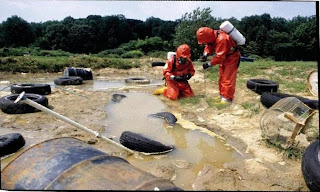In

the recent past however, even Jet Airways has been caught unawares by the entry of new and aggressive competitors; notable among them being Air Deccan and Kingfisher Airlines. The former’s low cost positioning and the latter’s unique branding and value proposition succeeded in establishing, beyond doubt, that there is definitely space for more players in the untapped aviation market.
Surely, when faced with such a barrage of competitors, this acquisition comes as a masterstroke to achieve tremendous scale and size. But is it size in terms of fleet? Why, certainly not! Air Sahara’s entire ‘fleet’ comprises of leased aircraft, and that is one reason why analysts are surprised with the price offered for acquisition. Dr. Mallaya agrees. According to him, Kingfisher found $500 million too much for Air Sahara, since all aircraft s were on lease, and there was no guarantee of transfer of overseas rights or the infrastructure to the acquirer.
The competition is definitely not looking overtly worried with regard to the market share issue. According to Captain G.R. Gopinath, Managing Director, Air Deccan, “We are at the bottom of the pyramid, and hence, not concerned... The merger could make it difficult for other airlines which are competing with Jet.” Air Deccan’s focus, as Captain Gopinath further elaborates, will be to “concentrate on connecting new or unconnected sectors and optimising costs to offer lower airfares.”
But

with Jet’s acquisition, Kingfisher, along with other players, has expressed clear concern over infrastructure issues. Jeh Wadia, MD, Go Air, puts it in a nutshell, “India has a shortage of infrastructure, especially in terms of night parking, take-off and landing slots and check-in counters.” It is feared that Jet would unjustly exploit the already dilapidated airport infrastructure to its advantage. A major concern is for the Delhi-Mumbai route, which accounts for nearly 50% of air traffic in India, and Jet would now have access to 50% of the overnight parking bays at these airports, and Air India would have 35%; leaving just 15% for the others. Wadia elaborates, “A new airline requires minimum six aircraft s in a base in order to achieve economies of scale.” Else, the cost structure of the airline would shoot up; which means a certain entry barrier to new players. Now one can comprehend somewhat, why Jet has agreed to the high price.
Also, there is one other significant advantage that you won’t hear from the Jet camp. The company has been facing problems in getting the landing rights for the US, as it is accused of underworld links (an allegation yet to be proved). Jet can use Air Sahara as its dummy for its US operations, since the latter has these rights. But Jet officials would be in no mood to party yet, as the continuation of Air Sahara’s international flying rights is still subject to regulatory approval.
Apar

t from these, it will take quite some time to reap the benefits of operational synergies. Erstwhile Air Sahara flies to more than 26 destinations including its international portfolio of Chicago, London, Colombo, Kathmandu, Singapore, while Jet connects 43 destinations in India and international operations in Colombo, Kathmandu, Singapore, Kuala Lumpur & London. On the international front, there won’t be much problem, but the challenge will be rationalising the domestic routes and allocating additional resources efficiently.
One very critical battle will be on the human resource front, though Subrata Roy of Sahara group has affirmed that the Air Sahara employees won’t be on the losing side and their cadres and gross emoluments will remain unaffected (whether or not they are absorbed by Jet). Naresh Goyal, on the other hand, is clear that Air Sahara employees will be inducted purely on merit. Nevertheless, Jet cannot avoid the fact that it will require a substantial number of Air Sahara personnel to manage its extended operations. Since these employees have been nurtured under a totally different culture, their induction into the Jet culture will not be that easy.
Investors, however, looked pretty unfazed by these issues. As the deal was on, Jet’s share prices and trading volumes were scaling up day by day. On January 19, 2006 the day’s high was Rs.1169.8, higher than the peak prices for the previous three days. However, the price was languishing soon enough, closing at Rs.1003.55 on January 24.
For Complete IIPM Article, Click on IIPM Article
Source : IIPM Editorial, 2007
An IIPM and Professor Arindam Chaudhuri (Renowned Management Guru and Economist) Initiative
For More IIPM Article, Visit Below....
! IIPM Management Introduction ! IIPM Management ! IIPM Management Courses ! IIPM Centers ! IIPM World !
 Hicks has been all smiles lately. First, he won the Season 5 of American Idol, & then got voted as People’s 2006 Most Eligible Bachelor! And by the looks of it Taylor’s really enjoying his bachelorhood! The very private Hicks was seen having a gala time with a blonde babe at a Hawaii beach. It wasn’t long before the Soul Patrol identified the lady to be Caroline Lyders, anchor the morning show of WISN TV – 12 News This Morning.
Hicks has been all smiles lately. First, he won the Season 5 of American Idol, & then got voted as People’s 2006 Most Eligible Bachelor! And by the looks of it Taylor’s really enjoying his bachelorhood! The very private Hicks was seen having a gala time with a blonde babe at a Hawaii beach. It wasn’t long before the Soul Patrol identified the lady to be Caroline Lyders, anchor the morning show of WISN TV – 12 News This Morning.  Pictures of the duo canoodling at the beach have aroused pretty much everybody’s curiosity but for now Lyders has brushed off the hook-up with the usual ‘We’re just friends’ line. Well actions speak louder than words!
Pictures of the duo canoodling at the beach have aroused pretty much everybody’s curiosity but for now Lyders has brushed off the hook-up with the usual ‘We’re just friends’ line. Well actions speak louder than words!






ank+future!.JPG)














